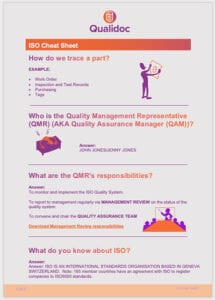How would you like to have an operation by a surgeon who, when you ask him what your chances were, told you that 99 out of 100 people died during the operation, but you were lucky because you were the 100th patient? I wouldn’t give much hope for a healthy recovery, would you?
I am the first to say that I know very little about statistics. I barely scraped through the mandatory course at university which an unfeeling administration required that I take to complete my studies. My interest and spirits heightened considerably, however, when I realised that the course was more about recognising spurious statistics rather than how to use and compile statistics.
The text for the course was a book by Stephen K. Campbell, “Flaws and Fallacies in Statistical Thinking”. In his chapter on ‘Far Fetched Estimates’ I was delighted to read his section on `Statistics Unknowable Because Some Physical Barrier Interferes with Data Collection’. He quoted a researcher (Seligman) who was anxious to identify the basis for claims made by various newspapers that the rat population in New York City was in the range of 8-9 million. Apparently the only real study on the matter had been conducted in 1949. Under a grant from the Rockefeller Foundation, researchers had actually gone out and counted rats in a certain area, and extrapolated these figures to the whole of New York City. The whole exercise became ridiculous (not to say useless) when one of the researchers remarked to Seligman:
“You can count a rat on the eighth floor, and then other on the seventh floor, and then another on the sixth,
but after all, you might just be seeing the same rat three times.”
In keeping with many other people, I believe that statistics are no substitutes for good judgement based on experience and the ability to make imaginative connections. I believe that successful business practice comes from having contract conditions set out clearly and concisely, bearing in mind that somewhere down the road you may need contingency time to cover ‘unknowable statistics’; conditions which can’t be anticipated from trends, immaculate though your statistical techniques may be.
Suffice it to say that if you intend to be registered, to IS09001, AS9100 or any other international standard, you should look around the company processes and see where statistics could be an advantage. As far as I am concerned, you are not required to spend time and money gathering information which captures the flavour of the month but will not further your cause in business.
Yet another quotation from Stephen Campbell:
‘”The story is told about an event during a trial following a calamitous wreck at a railway crossing. A railway worker testified that he had signalled vigorously by waving a lantern. His animated demonstration of the vigour with which he waved the lantern greatly impressed the jury, which eventually found the railway and its personnel innocent of negligence. After the trial, the lawyer for the railway commended the man for the effectiveness of his testimony. The railway worker, obviously greatly relieved, said: ‘ Thanks’. But for a while there I was afraid the other lawyer was going to ask whether the lantern was lit.”
I rest my case.
way
when this tool is used). I believe that everything stems from having the contract conditions set out clearly and concisely, bearing in mind that somewhere down the road you may need contingency time to cover ‘unknowable statistics’; conditions which can’t be anticipated from trends, immaculate though your statistical techniques may be.
Suffice it to say that if you intend to be registered, to IS09000, QS9000, EN46000 or any other international standard, you should look around the company processes and see where statistics could be an advantage. As far as I am concerned, you are not required to spend time and money gathering information which will not further your cause in business.
I’ll close this chapter with yet another quotation from Stephen Campbell:
‘The story is told about an event during a trial following a calamitous wreck at a railway crossing. A railway worker testified that he had signalled vigorously by waving a lantern. His animated demonstration of the vigour with which he waved the lantern greatly impressed the jury, which eventually found the railway and its personnel innocent of negligence.
After the trial, the lawyer for the railway commended the man for the effectiveness of his testimony. The railway worker, obviously greatly relieved, said, Thanks’. But for a while there I was afraid the other lawyer was going to ask whether the lantern was lit.”
I rest my case.
